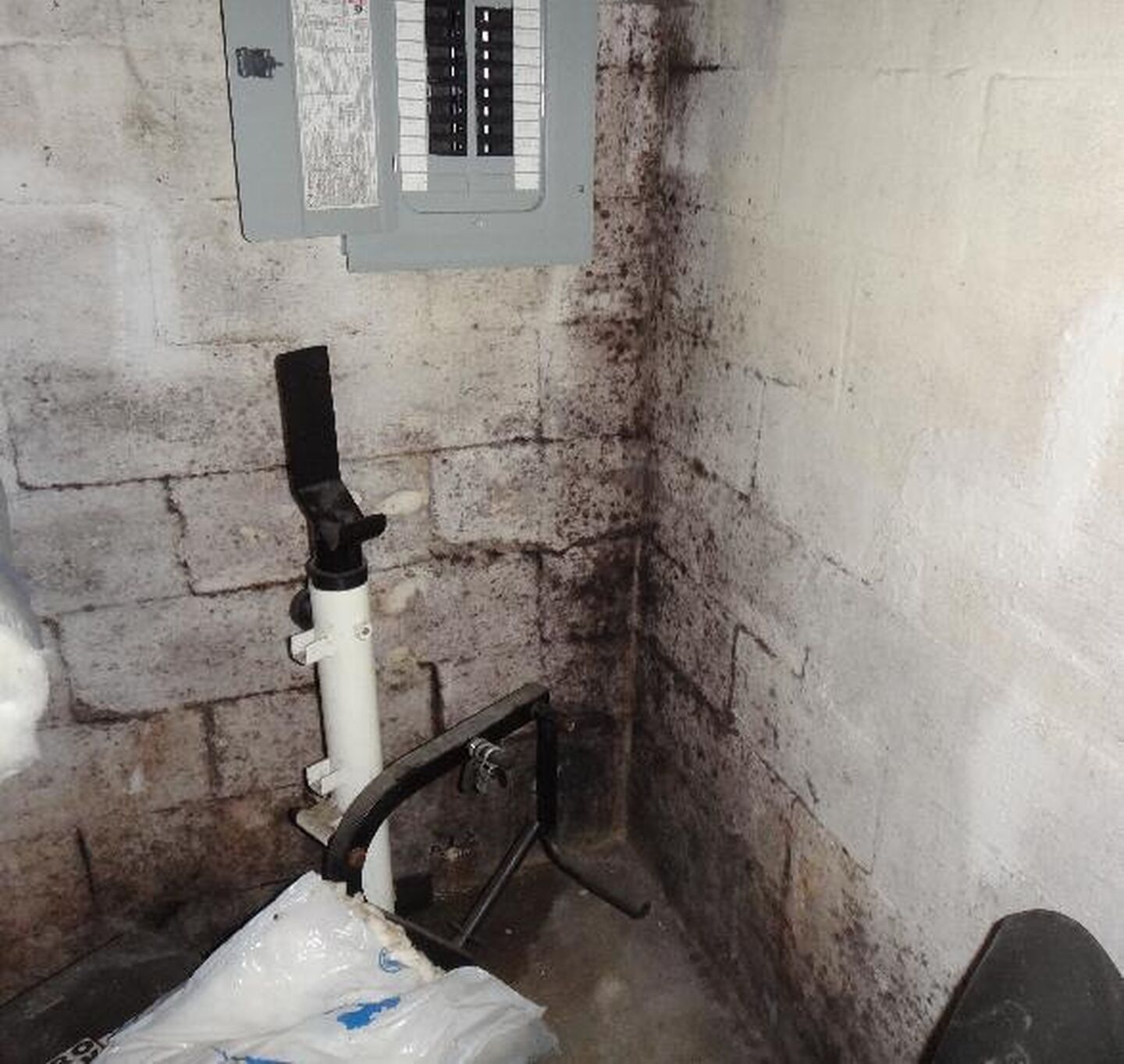Guide to Basement Moisture Control — 5 Steps To Take

Fighting basement moisture can be an ongoing battle. This area of your home is surrounded by moist soil and by basement walls that do little to keep that moisture out. Usually basements have small windows to help ventilate the area, but when do these ever get opened? During the season when the air is dry, they can be opened, but the air they’d let in is likely too chilly. During the warm season the air usually comes in with humidity. So what can you do?
The first step toward basement moisture control is to identify the source of the moisture. Once you know where it’s coming from you can eliminate, or at least control, it. This is the best long term approach because if you only compensate for basement moisture by installing a dehumidifier, you may be masking the signs that moisture is damaging the structure of your home. By the time you discover what damage the moisture has been doing, the destruction will be so advanced the repair bills will be crazy expensive.
5 Steps To Help Control Basement Moisture
Here are steps you can take to eliminate or control sources of basement moisture and gain valuable living space in your home.
1. Dryer vent
One large source of basement moisture that is easily controllable is the moist air that comes out of your dryer and blows that wetness to the outside. Oftentimes the vent pipe taking this moist air outside gets disconnected and all that moisture gets blown into the basement instead.
Solution
Look behind the dryer and make sure the metallic looking pipe coming from the back of the dryer is securely fastened. Then run the dryer and make sure the pipe from your dryer to the outside doesn’t have leaks. If it does, use foil tape to permanently seal the pipe leaks.
2. Open sump basin
Moisture inside the basement can come from an open sump basin. When the basin doesn’t have a lid, the water evaporating from inside can be a constant source of basement moisture.
Solution
Put a cover on the basin so the water is enclosed in a sealed container. Get a lid that screws down to the basin, sealing the water inside. If you have a clay or metal basin, get a lid that can be screwed to the surrounding concrete, creating a tight seal.
3. Seepage
Water leaking in from where the floor meets the wall, through cracks or over the top of the foundation introduces a tremendous amount of moisture into your basement. This moisture promotes a damp, musty feel to your basement and allows the ever-present mold spores to thrive and spread.
Solution
Waterproofing specialists, like U.S. Waterproofing, are trained to see the early signs of seepage and have ways to permanently eliminate or at least manage that moisture, so it doesn’t cause problems. Our repair methods include repairing cracks, installing interior drainage where the floor meets the wall, and preventing top of foundation seepage. If there is a general dampness in the basement but no identifiable sources of water entry, we can install a powerful dehumidifier as the best course of action.
4. Plumbing Leaks
Plumbing pipes are typically out of sight behind shower walls, inside vanities, behind the washer or under laundry sinks. They are also typically prone to leak. Because they are out of sight, basement plumbing leaks can exist for a long time, quietly causing wood to rot, drywall to crumble, and mold to thrive before the leaks are discovered.
Solution
Make a point to regularly inspect your plumbing pipes, sink shutoffs and drain pipes. Run water when you are inspecting them to see if the drain pipes or shutoffs leak. Push firmly on the bottom of your basement shower walls to see if they are spongy and regularly check pipe connections and the floor below them for signs they may be leaking.
5. Dirt / Gravel Crawl Space
Crawl spaces with dirt or gravel floors tend to feel moist because the ground moisture can easily evaporate up into the crawl space. If your crawl space entrance is open to the basement, this gives that moisture an easy migration path into your basement. (If it’s not open to the basement, the moisture will still rise and affect the living space above it.)
Solution
If the crawl space moisture is enough that you can scoop it into a cup, then a drainage system with pump needs to be installed. If the moisture is just dampness, encapsulate the crawl with a sealed liner to keep the moisture from entering the house. Warning: Never put a powerful dehumidifier in a damp, dirt floor crawl space. It will suck the moisture out of the dirt that’s supporting the foundation and cause it to sink.
Taking the steps above should have a considerable impact on controlling your basement moisture. When you are ready to make your basement a nicer, drier place to enjoy, schedule a free visit with us. We have solutions for even the most serious basement moisture problems.




